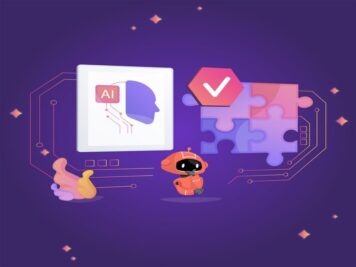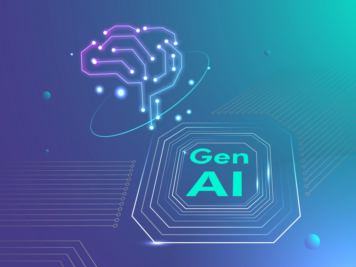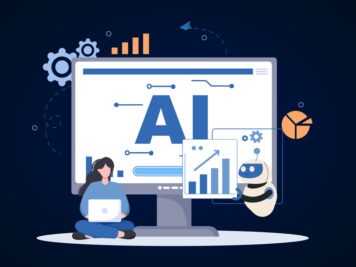By 2028, 33% of enterprise software applications are expected to embed AI agents at its core. And with 90% of businesses viewing Agentic AI as a competitive edge, the momentum is undeniable.
But here’s the catch:
Most conversations about Agentic AI applications are still stuck in theory — high on promise, low on real-world traction.
If you’re a founder, CTO, or product leader trying to cut through the noise, this article breaks down:
- What Agentic AI actually looks like in action
- How to know if it’s the right fit for your tech stack
- Where it’s already driving business outcomes
- And the implementation risks and tradeoffs you really need to prepare for
Because this next wave of AI isn’t just about output — it’s about autonomous systems that make decisions, adapt to context, and take initiative. That’s a fundamentally different kind of tool — and a much bigger opportunity, if you get it right.
Let’s break down what’s working today, what’s coming next, and how to put Agentic AI applications to work for your business.
What makes Agentic AI different and more capable
Before we dive deeper into Agentic AI applications, let’s align on what actually makes this tech different from the typical “gen AI” most people are experimenting with.
Here’s the short version:
Generative AI creates content. Agentic AI gets things done.
While GenAI responds to prompts, Agentic AI is built to act — with context, autonomy, and reasoning. It doesn’t just generate outputs; it navigates workflows, makes decisions, and takes action — often without being told what to do next.
These five capabilities set Agentic AI apart:
Autonomy
Agentic systems can initiate, execute, and adapt tasks with less human oversight. Unlike conventional AI, which seeks direction, Agentic systems operate with defined purposes and are self-directed. The advantages? Less manual intervention, less operational friction, and greater productivity.
Reasoning
Agentic AI brings reasoning into the loop: it evaluates variables, resolves ambiguities, and selects optimal paths in real time. It doesn’t just follow logic; it applies it. That means fewer brittle rules and more robust decision-making in live environments.
Adaptive planning
Plans are only as good as their ability to change. Agentic AI doesn’t just execute fixed scripts; it revises them mid-flight. When objectives change, data updates, or obstacles arise, the agent adjusts its strategy—just like a person would, but with machine speed.
Context understanding
True context goes beyond parsing prompts. Agentic AI understands nuance, intent, and context—be it a spoken request, a workflow trigger, or a cascade of events. This depth enables smoother integration into complex, multi-system environments.
Action enablement
Analysis is critical. What operationalizes Agentic AI is its ability to act on information. It triggers workflows, launches services, triggers alerts, or adjusts parameters—closing the loop between intelligence and execution.
Put together, these five capabilities mark a departure from traditional automation. While past systems operated on rigid scripts and reactive logic, Agentic AI brings dynamic intelligence into the loop. It thrives in environments that are complex, fast-changing, and full of ambiguity—exactly where modern businesses operate.
Is Agentic AI the right fit for you?
Agentic AI is powerful — but it’s not plug-and-play. And it’s definitely not a silver bullet. The question leaders should be asking isn’t “What can AI agents do?” It’s “Where do they make the most sense in my business — today?”
Let’s start with a truth:
There is no single AI agent right now that can take over full, end-to-end enterprise processes without oversight. What we have is targeted autonomy — systems that can make decisions in complex, real-time contexts where traditional automation breaks.
So how do you decide if Agentic AI is right for your business?
Start with this simple framework:
Is the process too complex for traditional automation?
Traditional automation still works — and works well — when:
- The logic is fixed.
- The outcomes are predictable.
- The need for variation or contextual reasoning is low.
Think assembly lines, sensor-triggered workflows, compliance checklists. In these cases, you don’t need an agent — you need strong scripting and deterministic systems.
Agentic AI only adds value when the rules aren’t fixed, the environment is constantly changing, and the decisions require adaptation.
If your workflow needs judgment, real-time adjustments, or cross-domain coordination, that’s your signal.
Will the value justify the investment?
Let’s be clear: building agentic systems isn’t cheap or instant.
You’ll need:
- Clean, reliable, well-integrated data.
- Engineering capacity for development, training, and deployment.
- Ongoing monitoring, governance, and iteration.
That means you should model both:
Strategic benefit: Can this drive better customer outcomes, smarter ops, or reduce serious inefficiencies?
Time to value: Are you ready for a medium-term investment that compounds, not a quick win?
Agents take time to ramp. Bank of America’s Erica — one of the most visible success stories — took years and over 50,000 performance updates to get where it is today.
So if you’re looking for a fast ROI or a fully turnkey solution, Agentic AI may not be your starting point.
Do you have the technical foundation in place?
Agentic systems can only be as smart as the data and infrastructure they rely on.
You’ll need:
- Data maturity — siloed, unstructured, or low-quality data will break the agent’s reasoning.
- Strong MLOps — to manage continuous training, evaluation, and rollback capabilities.
- Governance protocols — especially as autonomy increases. Think hallucination control, bias mitigation, ethical review.
The more autonomy you give the system, the more responsibility you take on for guiding, monitoring, and auditing its behavior.
If you’re early in your AI maturity curve, it might be better to start with smaller, agent-like capabilities inside specific domains before going full-scale.
Are you ready to scale intelligently?
Agentic AI shines when scaling across edge cases.
Unlike traditional automation (which needs extensive manual rework when conditions change), agents are designed to learn on the fly — adapting to new patterns, user behaviors, or system dynamics.
Yes, retraining and oversight are required. But the ability to scale learning across scenarios — without reinventing the rulebook each time — is where long-term ROI emerges.
If your process is high-stakes, dynamic, and filled with decision points that bottleneck growth — Agentic AI is probably worth exploring.
Agentic AI applications in action
Once you’ve figured out whether Agentic AI fits your business, the next question is obvious:
Where is it working today — and what can we learn from it?
Here are some real-world examples that show how agentic systems are already making a dent:
Security & observability
Ask any SRE or SOC lead what’s broken, and they’ll tell you:
- Too many alerts
- Too little context
- Not enough time
What they won’t tell you (but know deep down) is this: the system was never built to scale humans. And it’s cracking.
Agentic AI fixes this by treating observability and security like a living system.
It ingests logs, metrics, traces—fine. But then it reasons: “Is this a real issue? What’s the likely cause? What do we do about it?” Then it does it. Without waiting.
It doesn’t ping a Slack channel. It patches the issue. Re-routes traffic. Isolates endpoints. Runs scripts. Moves.
The result?
- You cut resolution time from hours to minutes.
- You reduce alert fatigue.
- You free up your smartest engineers to do work that actually matters.
Retail Banking
The future of banking isn’t more self-service tools. It’s zero-service friction—customers get what they need before they ask.
Agentic AI enables that.
Behind the scenes, it automates high-friction ops: KYC, AML, transaction monitoring, fraud detection. That’s already table stakes.
The real value shows up when agents start acting on customer intent—without waiting for a form fill or support ticket.
- A customer’s credit risk changes? It adjusts limits.
- They miss a payment? It initiates restructuring.
- Their behavior signals a big life event? It starts onboarding them into the right product—before they even think to ask.
This isn’t “personalized banking.” That’s been done.
This is autonomous relationship management at scale.
If you’re a bank not building this now, you’ll lose your customers to the ones that are.
Other use cases
Here are use cases where Agentic AI is already replacing legacy processes:
Travel booking
Agents act like full-service travel planners. Give them your budget and preferences — they’ll pick the flights, hotels, stops, and book the whole trip. Zero back-and-forth. Just done.
Customer support
We’ve all seen basic AI chatbots. This is the next level. Agents now understand the issue, troubleshoot, resolve, raise a ticket if needed, and loop in humans only when necessary.
Data analytics & reporting
Instead of waiting on your data team to dig through spreadsheets, agents can analyze datasets, pull trends, flag anomalies, and build full reports — slides and all.
Supply chain management
Agents monitor suppliers, track market signals, detect shipping delays, and optimize stock and logistics — all in real time. They can even predict equipment failures before they happen.
And this is just the beginning. As agentic systems get more integrated, they’ll become the quiet layer of intelligence behind how businesses operate — sensing, adapting, and acting across teams and tools.
Use Agentic AI where complexity and value justify it
Don’t implement agents just because it sounds futuristic. Use them where:
- Complexity makes rules-based systems brittle
- The upside of faster, smarter decisions is significant
- You have the technical and strategic muscle to make it count
Start where stakes are high but failure is manageable. Let the agent learn. Iterate. Then scale.
Agentic AI isn’t about chasing AI trends — it’s about designing for autonomy where it matters most.
Challenges with Agentic AI
There’s no denying the upside of Agentic AI. But let’s be real — this isn’t a plug-and-play solution.
Rolling out intelligent agents across your org requires more than a model and some data. It requires new ways of thinking about infrastructure, governance, accountability, and even the role of your team.
If you’re seriously exploring Agentic AI applications, here’s what you need to be thinking about next:
Human-on-the-Loop vs. Human-in-the-Loop: choose the right oversight model
As agents become more autonomous, the human role shifts from doer to supervisor. But how involved should humans still be?
There are two primary models worth understanding:
Human-in-the-Loop (HITL):
This approach keeps people involved at key decision points. It’s especially useful early in implementation when AI agents are still learning, and the cost of errors is high. Human input here helps course-correct in real time, trains the model with real-world context, and prevents cascading failures.
Human-on-the-Loop (HOTL):
In this model, humans step back. The agent runs largely independently, with only periodic review or governance. It unlocks more speed and efficiency — but also demands confidence in the AI’s maturity, scope, and safeguards.
Early adopters often start with HITL and move toward HOTL as confidence and performance grow. Either way, humans don’t leave the loop — they just move up the chain.
Pro tip: Autonomy is not a binary. Build in checkpoints, not handovers.
Hallucinations are real — and they’re expensive
Agentic AI systems can do a lot — but they’re not infallible. One of the biggest risks? Hallucinations — where AI confidently delivers outputs that are flat-out wrong.
In creative tools, that’s inconvenient.
In enterprise systems, it’s dangerous.
According to NYT, AI is getting more powerful, but its hallucinations are getting worse. This Mckinsey AI Report estimates $67.4B was lost globally due to hallucinated AI output.
Single-tasks agents face limitations under heavy loads. They struggle with coordination, fail to adapt effectively across diverse tasks, and are prone to errors and hallucinations.
As our Principal Data Scientist, Abhishek Gupta, puts it:
How to reduce the risk:
- Use narrow, domain-specific agents, not general-purpose ones
- Add RAG (Retrieval-Augmented Generation) to ground responses in trusted internal data
- Set up validation workflows — especially in finance, security, or healthcare contexts
Also Read: How to Implement RAG Pipeline Using Spring AI
Governance Isn’t Optional — It’s How You Scale
Once agents start acting across systems, compliance and accountability become non-negotiable.
You’ll need to define:
- What your agents are allowed to access
- How decisions are logged and audited
- Who owns the outcomes — and how risks are mitigated
Agents operate faster and across more systems than humans can monitor manually. So your governance model needs to be automated, observable, and scalable.
Your infrastructure may not be ready — yet
Let’s be honest — most orgs weren’t built for autonomous systems. If you’re dealing with legacy platforms, siloed data, or brittle APIs, you’ll hit friction fast.
Watch out for:
- Siloed apps that block real-time data flow
- Low-quality data that sabotages agent reasoning
- Weak API architecture that limits cross-system execution
- Limited scalability across regions, business units, or processes
Agentic AI thrives on clean, connected systems. If your foundation is shaky, your agents will be too.
Regulation is coming — fast
Especially if you’re in a regulated space (banking, healthcare, insurance, etc.), the compliance burden around AI is growing quickly.
You’ll need to prove:
- How your agents make decisions
- That they’re not biased
- That customer data is handled responsibly
- And that someone — ultimately — is accountable
This is where clear model explainability, audit trails, and access control protocols become make-or-break.
Think of it like hiring a VP of Ops: autonomy is great — but trust comes from accountability.
You can access Fintech Compliance Checklist to know more.
Adoption still favors the bold (and the big)
Right now, most Agentic AI experimentation is happening inside large orgs with:
- Deep AI/ML talent
- Robust data foundations
- Legal & compliance teams to navigate the gray areas
- Patience for long-term ROI
That’s starting to change, thanks to evolving standards like:
- MCP (Model Context Protocol)
- A2A (Agent-to-Agent)
- AGNTCY (Agency)
..which aim to simplify orchestration and scale. Add to that the rise of Process Intelligence (PI) as a way to feed real-time data into agents, and you’ve got a path forward for mid-sized orgs too.
But make no mistake: success still requires investment, patience, and readiness.
You may also find this interesting to watch if you want to explore the challenges and best practices of adopting multi-agent systems—and how to fine-tune them for real-world impact.
Conclusion
Agentic AI applications are no longer experimental. They’re showing up in production — across security, customer experience, analytics, and more.
But success doesn’t come from plugging in a model and hoping for the best.
It comes from:
- Knowing where autonomy beats automation
- Building with the right mix of human oversight and system trust
- And aligning your tech strategy with real-world business complexity
This is a shift — not a shortcut. It requires new infrastructure, new governance models, and a real investment in operational readiness.
But if you get it right, Agentic AI doesn’t just save time — it transforms how your business thinks, reacts, and grows.
If you’re serious about unlocking autonomy that delivers — not just dazzles — now’s the time to start.
We help tech-first teams go from AI exploration to real deployment. If you are thinking of piloting agentic workflows- we should talk.
References
https://venturebeat.com/ai/agentic-ai-and-the-future-state-of-enterprise-security-and-observability/
https://www.uc.edu/news/articles/2025/06/what-is-agentic-ai-definition-and-2025-guide.html
https://www.weforum.org/stories/2025/05/ai-agents-select-the-right-agent/
FAQs
How will Agentic AI reshape enterprise customer service interactions?
It’ll flip the script from responding to tickets to resolving root issues proactively. Instead of waiting for customers to complain, Agentic AI will recognize friction, interpret behavior, and take initiative — like renegotiating payment terms or offering personalized support without being asked. This moves customer service from reactive to anticipatory.
What are the key challenges in deploying autonomous Agentic AI at scale?
Three things trip teams up fast:
- Infrastructure debt (legacy systems & siloed data)
- Governance gaps (no clear audit/control on what agents can access or do)
- Trust issues (hallucinations, explainability, compliance risks)
You don’t scale Agentic AI with brute force. You scale it with clean data, tight oversight, and purposeful rollouts.
How can I build trust in Agentic AI systems through data management?
Simple: ground them in your data, not just a foundation model’s best guess. Use Retrieval-Augmented Generation (RAG) to feed agents domain-specific context. Define access controls. Monitor for hallucinations. And most importantly — treat data hygiene like uptime: non-negotiable.
What role will multi-agent orchestration play in future enterprise applications?
It’s the next frontier. Think less “one smart agent” and more “a network of specialists.” As standards like A2A and MCP mature, expect agents that coordinate across departments — finance, ops, IT — to solve problems end-to-end. Multi-agent systems won’t just automate tasks. They’ll manage workflows like a high-functioning team.
How might Agentic AI reduce costs while enhancing decision-making processes?
It shrinks both time-to-decision and cost-per-decision. By automating complex reasoning, flagging risks early, and taking corrective action autonomously, Agentic AI eliminates manual cycles that drain hours (and dollars). The ROI? Fewer escalations, faster resolutions, smarter moves.









